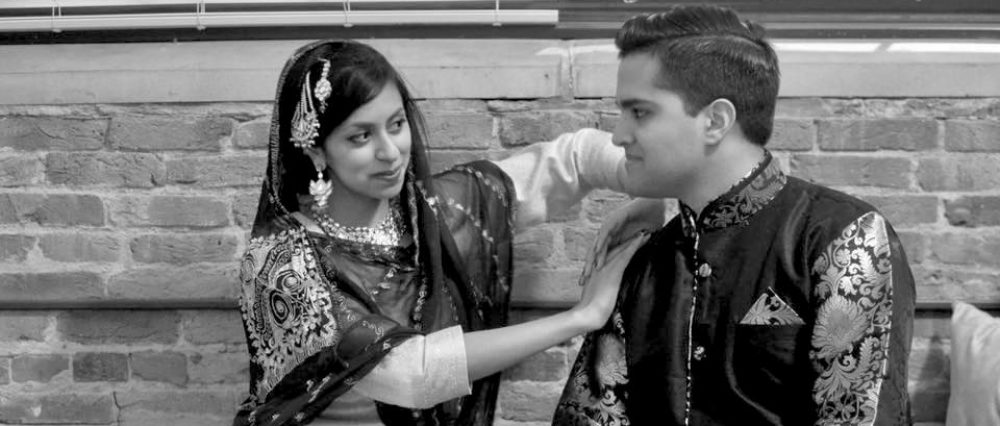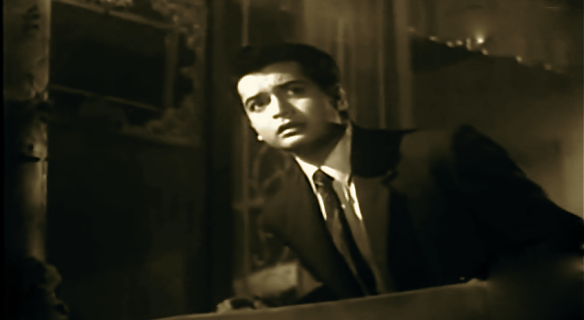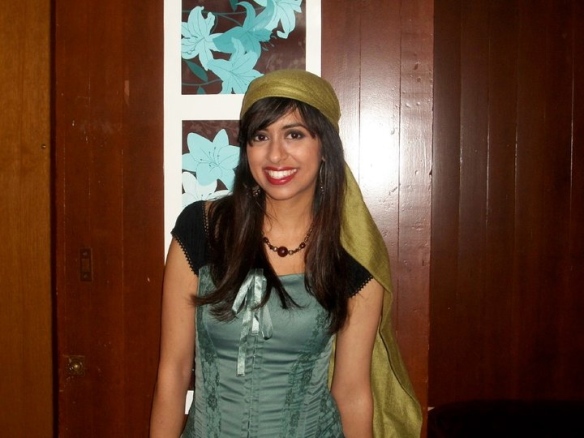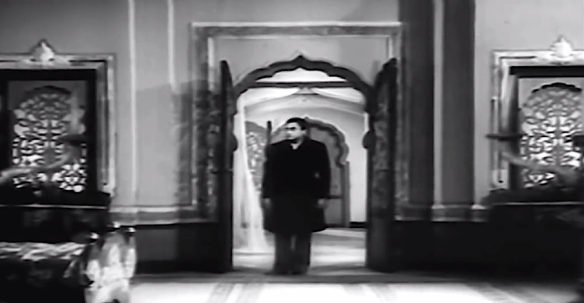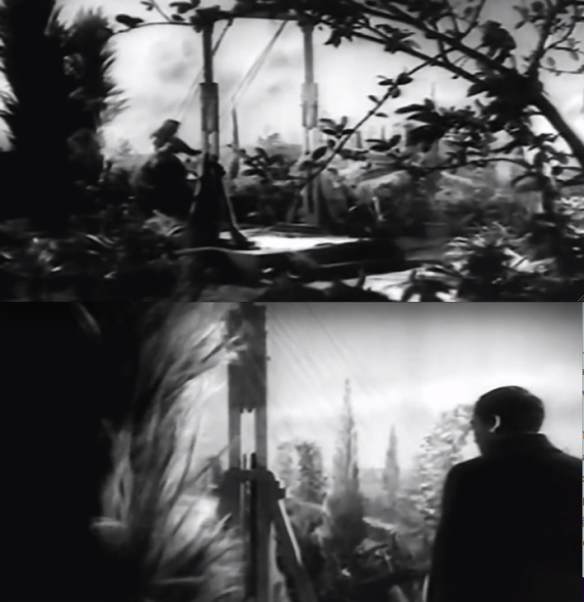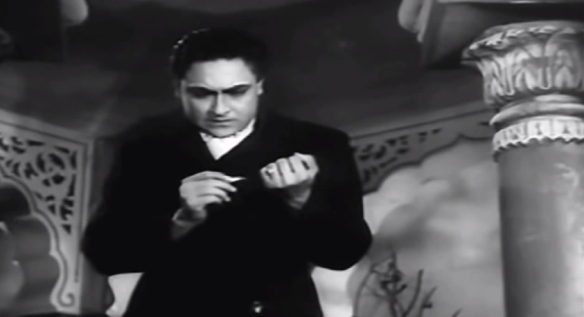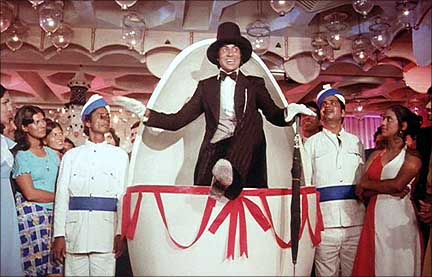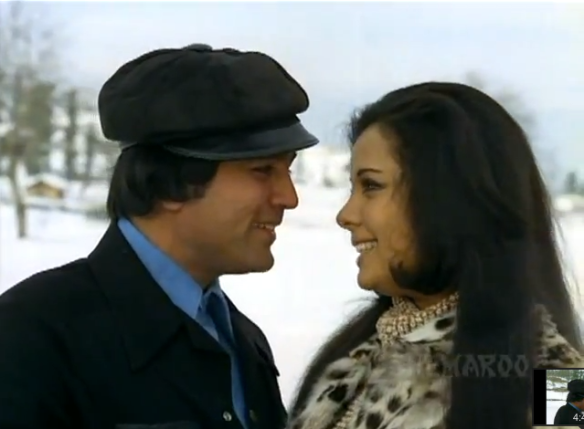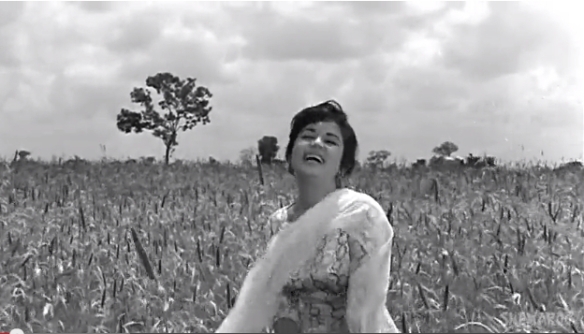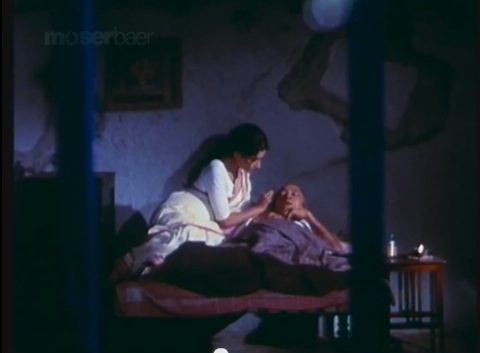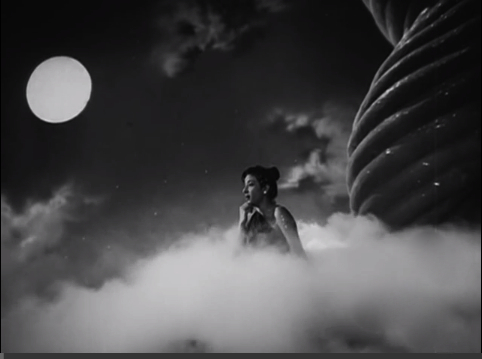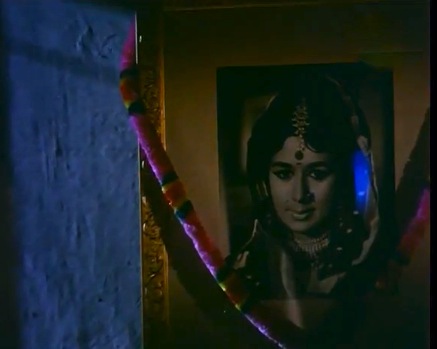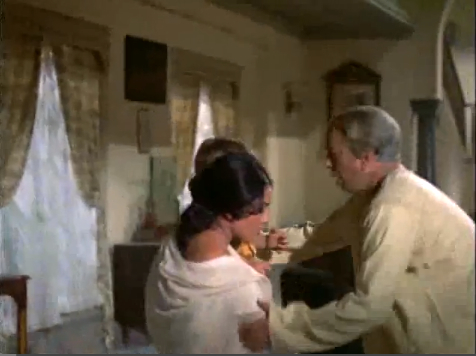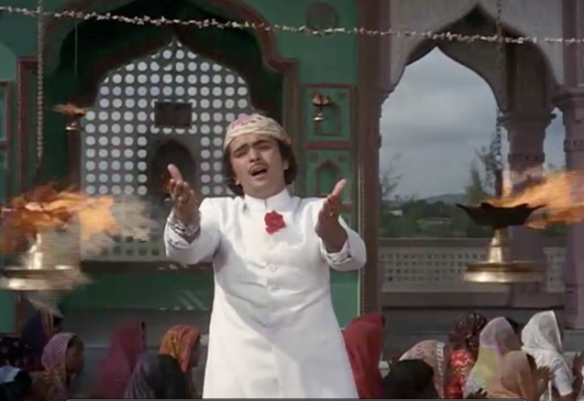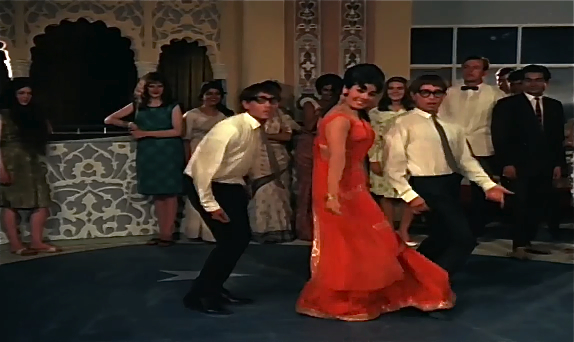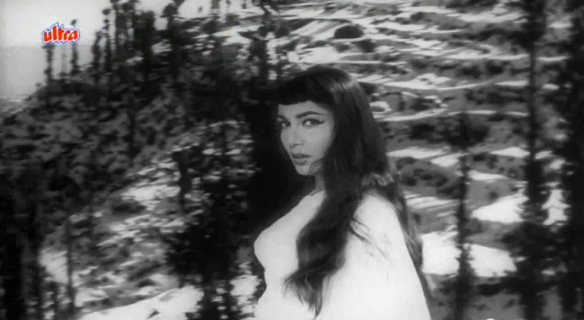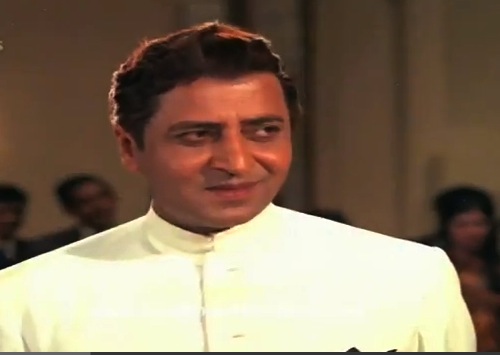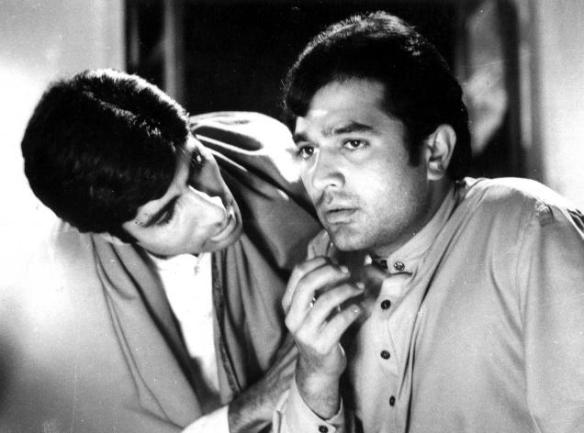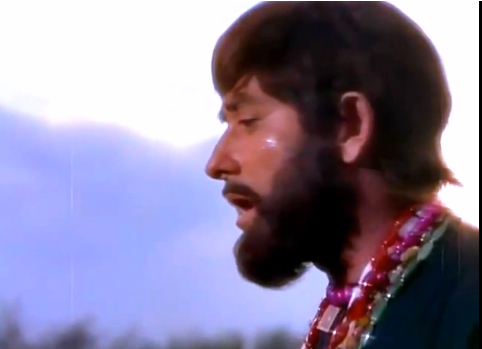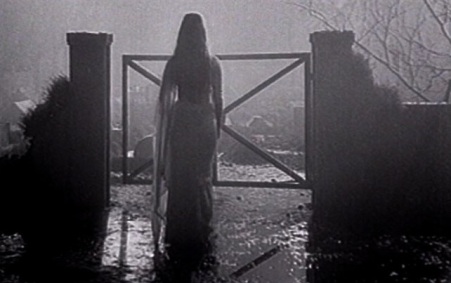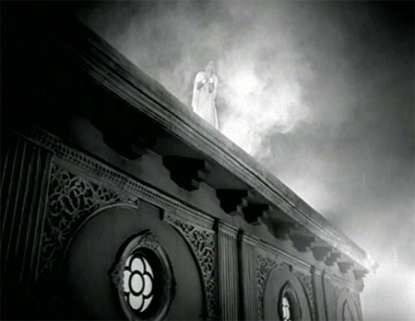Happy Halloween! What better way to give yourself the creeps than with a vintage Hindi film song! Mr. 55 and I once hosted a Spooky Song-themed study break on-campus during which we projected old Hindi film noirs on a large screen, drank rooh afza and jammed nerdily to Lata’s high notes. Was it any surprise the two of us were the only ones really having an awesome time? Join us in our countdown to the spookiest song of classic Bollywood! When I say scary, I’m not referring to Vinod Khanna’s lime green tuxedo in Aan Milo Sajna (although it might give you nightmares). I’m talking about the real deal here. These are songs that will keep you up at night, that will haunt your waking moments as you grapple with the symbolism. And if you see a mysterious woman in a white-sari floating around your house this evening…well, don’t say we didn’t warn you!
The Fifteen Scariest Songs from Old Hindi Films!
15. Tujhko Pukare Mera Pyar (Neel Kamal 1968)
Few things are scarier than being buried alive. Rajkumar haunts his Mughal-era lover through the ages even when she is reborn as a 1960s desperate housewife.
14. Gagan Jhanjhana Rah (Nastik 1954)
This song is a hidden gem. Hemant Kumar actually impersonates God in this song with a voice that booms from the heavens amidst a stormy apocalpyse. The chorus is so darn creepy in this song, you might feel real chills from the wind sound effects mixed into the song!
13. Waqt Ne Kiya (Kaaghaz Ke Phool 1957)
What makes this song so spooky and yet so beautiful? It’s all in the lighting and the spectres lingering in the room–read our translation for more!
12. Jayen To Jayen Kahan (Taxi Driver 1954)
In our translation of this all-time creeper, we discuss the emptiness of the song’s mis-en-scene to heighten a feeling of abandonment, leaving you nothing but Dev Anand’s perfect pompadour to ease the pain.
11. Akele Hain Chale Aao (Raaz 1967)
While the movie Raaz may be a clunk, “Akele Hain” (that is reprised in a male and female version!) will certainly leave you clawing after your security blanket. Insider hint: Rajesh Khanna takes his shirt off later on in the movie if you can sit through the rest of the film.
10. Raat Andheri (Aah 1953)
In this heartbreaking social drama, Raj Kapoor plays a handsome tuberculosis patient unable to marry the girl of his dreams because of his illness. In the throes of self-pity, the minor key music haunts him as his own life slips away. Tragic, yes, but mostly just creepy.
9. Sau Baar Janam Lenge (Ustadon Ke Ustad 1963)
Mohammed Rafi’s unearthly beautiful voice echoes through the mist in this song like a phantom from the other world. The woman in mourning seems ready to commit suicide at any moment during the song, keeping the audience on their toes!
8. Dekhi Zamane Ki Yaari (Kaaghaz Ke Phool 1957)
This gentle song of disillusioned love beckons you in like a tantalizing dream, and then drags you to perdition as you scream over the ethereal chorus. Our earlier translation of Dekhi Zamane discusses the transitions of the song from fantasy to absolute nightmare!
7. Koi Duur Se Aawaz De Chale Aao (Sahib Biwi Aur Ghulam 1962)
One of my favorite songs in this genre, Guru Dutt is awakened in the middle of the night by a tender lament floating through the halls of the large empty mansion in which he works. Who is this mysterious and sad woman with the enchanting song? You HAVE to watch this genius star-studded film and find out!
6. Jane Kahan Gaye Woh Din (Mera Naam Joker 1970)
Good thing I don’t have a fear of clowns or this song would have permanently wrecked my childhood. Raj Kapoor plays a circus performer who has lost all those he has ever loved. He enters a private Hell in which he is bound to perform in his clown garb to an unfeeling audience, always smiling on the outside and crying on the inside. Brace yourself for several attempts at artsy camera tricks to make him float that could not be more creepy.
5. Gumnaam Hai Koi (Gumnaam 1965)
Based on the Agatha Christie novel “And Then There Were None,” Gumnaam is a kitsch-lovers delight. Drop-dead gorgeous (literally) Lata Mangeshkar’s voice haunts a group of travelers as they meander through a nameless forest. Newsflash! The “ghost” of this song actually chimes in with a high-pitch thrill when the music goes quiet, so listen carefully!
4. Naina Barse (Woh Kaun Thi? 1964)
One of the best examples of a femme fatale in Hindi films, “Naina Barse” is sung by a ghostly woman haunting her lover from a former lifetime. Her flowing white sari against the endless, crisp white snow of a Simla winter set the perfect stage for a nightmare. The woman in a white sari is a classic cliche–read more about its meaning here!
3. Kahin Deep Jale Kahin Dil (Bees Saal Baad 1964)
This song hardly needs an introduction, so famous is its eerie tune. One of the most brilliant shots is the slow crane down from above the chandelier to Biswajeet’s horrified stare at the piano. But has anyone else ever noticed the film version has the interlude violins playing an entire octave lower than in the recorded version?? It totally blew my mind when watching the film–and both ways are equally horrifying!
2. Jhoom Jhoom Dhalti Raat (Kohra 1964)
Stylistic symbolism sets this creepster apart from its competitors. My favorite moment in this song is when the shadow figures do an interpretive dance in the sand, acting out the “choDo piyaa mera, choDo haath” line. I get chills every time I watch this–the cinematography is genuinely brilliant and haunting!
1. Aayega Aanewala (Mahal 1949)
Welcome to the spookiest song of Bollywood! Nothing will ever top the song that officially taught Bollywood everything it needed to know about horror. Don’t expect any corpses to pop out of the closet–this song is way to classy for that. See our translation of this unbeatable classic for more!
So…I know I’m not going to be able to sleep tonight. What are your favorite spooky songs from Bollywood films? Tell us the scenes that have haunted your waking hours for years (think Sadhana declaring “Mujhe khoon achha lagtaa hai” on a rainy night)! Mr. 55 and I both hope you have a very Happy Halloween!
– Mrs. 55
